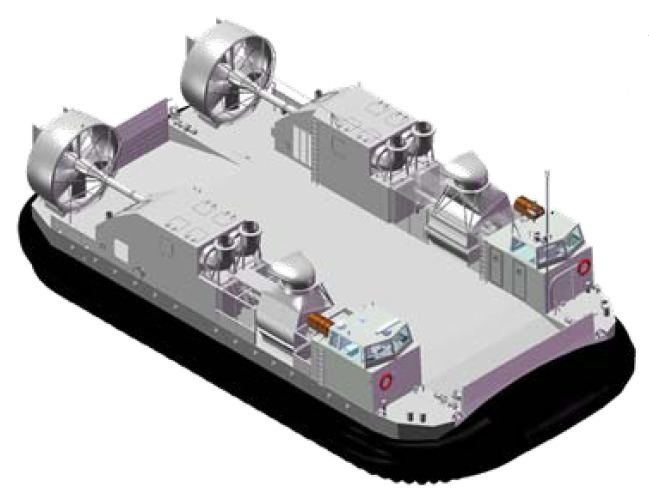Type Landing Craft In service In development | Place of origin United States | |
 | ||
Unit cost US$47.5m (FY15)US$55.5m (inc R&D) (FY15) No. built 73 planned, 9 under contract. Payload capacity 74 tons or145 Marines or108 casualty personnel | ||
The Ship-to-Shore Connector (SSC) is a system proposed by the US Navy as a replacement for the Landing Craft Air Cushion (LCAC). It will offer increased capacity, to cope with the growing weight of equipment used by the Army and Marines. As of 2015, the program is forecast to cost a total of US$4.054B for 73 hovercraft.
Contents
History
Several proposals have been made to replace the LCAC. In 2003, the Navy Transformation Roadmap set out plans to start R&D on a "Heavy Lift LCAC" project in 2005, but this was superseded by the LCAC(X) "LCAC Replacement Tactical Assault Connector". In August 2010, the US Navy issued a Request For Proposals for a contract to design and build 72 SSCs. The contract would be worth up to US$4 billion. A contract for detailed design work, and construction of the first test and training craft, was expected to be awarded in 2011.
Proposals
On July 6, 2012, the US Navy awarded Textron, Inc of New Orleans, LA a $212.7M fixed-priced incentive-fee contract for the detail design and construction of a Ship-to-Shore Connector test and training craft. The contract also includes the option for the production of eight additional craft; this option would increase total value of the contract to $570.4M. Textron began fabrication of the first nine SSCs in mid-November 2014. These will be delivered in 2017 and achieve initial operating capability (IOC) in 2020. Textron can produce as many as 12 SSCs per year.
Design
Although the design will be broadly similar to the LCAC, there will be several significant differences:
The four MT7 gas turbines that will be used to power each Ship-to-Shore Connector are a derived design of the Rolls-Royce T406 used in the Bell Boeing V-22 Osprey. The cores of the two engines types are identical, which should provide some relief in spare parts storage to those ships that will operate both the aircraft and the hovercraft. Top speed will be 50 kn (58 mph; 93 km/h). A simpler and more efficient drive train using one gearbox is on each side for less parts and maintenance and higher reliability.
The SSC has a designed lifetime of 30 years.
The 10th SSC to be delivered will have the capability to launch vehicles into the water rather than need to go all the way to the beach, after which that ability will be retrofitted to the previous nine vessels.
